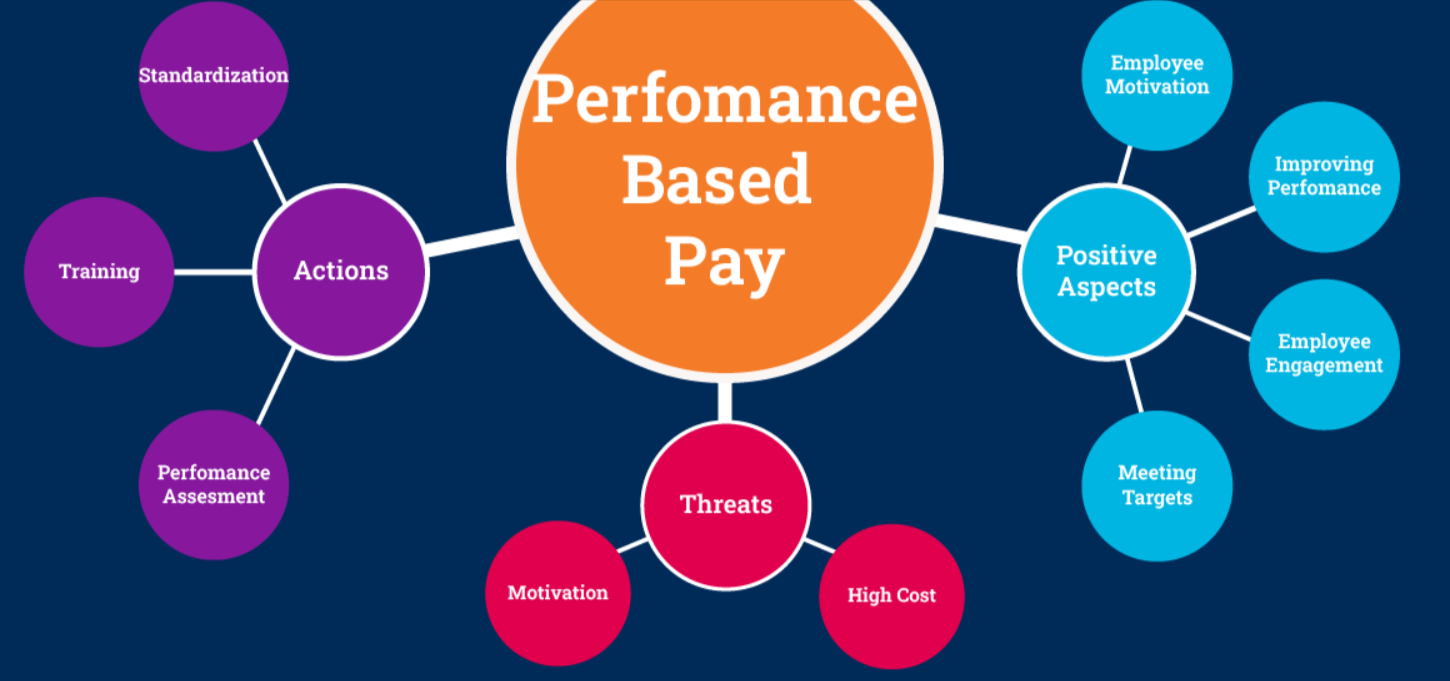The Pros and Cons of Performance-Based Pay Structures

Performance pay systems provide employees incentives to achieve or exceed their goals that are clearly defined and measurable. They incentivize employees and create a goal-oriented culture.
Nonetheless, those exceptions arise with some drawbacks, and the organization is counseled to examine them before deciding to implement such a plan. Read below for further information:
1) Increased Stress
If performance pay is implemented but not communicated properly in alignment with an action plan and organizational goals, the competition among fellow workers becomes painfully unhealthy, sacrificing quality work for quantity. This may even tempt employees to rush through jobs just to hit quotas of sales or productivity faster.
In perhaps a few cases, but usually facing a high likelihood, most employees in a performance-based pay system suffer from exhaustion and stress while trying to reach unbearably impossible standards set up by the company. Burnout then becomes an expectation and the odds are that any productivity gains intended for by these systems are lost into the clouds.
PS is badly designed with bonuses and incentives to extend the completion of several projects or improvement activities beyond the initial time frame, putting employees into a deep financial hole in earning their bonuses. This would lead them to be less motivated and happier about their current jobs.
Establishing a rock-solid strategy for sustaining negative consequences of employee performance management again, get feedback regularly, and implement HR tech for streamlining. Incentive plans should be given only for short-term goals, and a decent base salary should be in place so employees won't rely on bonuses should their performance be substandard or inferior.
2) Increased Turnover Rates
As with any large change in the company, time must be afforded to employees for their adjustment to a performance-based pay system. During this time frame, communication must remain free and open so that each and every ear can feel included and freely voice out all of their concerns and questions-this way, confusion or anger that may eventually derail employee morale can be prevented.
Some employees may thrive in an environment where their performance is rewarded with higher payouts; on the other hand, others may perceive the focus on competition and individualism as devaluing. Such an environment breeds distrust and blocks teamwork within your organization, harming its overall success along the way.
If companies fail to equally implement these systems, performance-based pay structures may evoke feelings of exploitation. Therefore, you should explain who qualifies for any bonuses and ensure that all staff are aware of this.
Improperly executed performance-based reward systems can create favoritism and that will substantially lessen employee satisfaction-something which is especially troublesome in highly turnover-prone jobs like contact centers and customer service positions. Such rewards, however, can work exceedingly well when fairly implemented on a corporate plan that motivates staff to higher levels of desired performance.
3) Lack of Accuracy
Without accurate assessment of performance, the organizations find it difficult to implement an effective performance pay system. This is especially true if the same criteria are rather complex and subject to bias.
For instance, the sales department frequently uses commission-based systems where bonuses are given to employees reaching prescribed measurable goals such as revenue target or customer satisfaction levels. Bonus payments are seldom attached to the base pay as these should not have a bearing on the salary amount received in a single year. If company sales objectives are too aggressive however, employees could feel pressured into meeting unrealistic goal targets, leading them to misinterpret their performance evaluation and cause inaccurate assessments of performance evaluation.
In addition to this, performance remuneration schemes may cause significant unpredictability in the income of the employee, thereby leading her/him to pay more attention on high margin products and services disregarding those products and services having medium or low margins that could potentially become more profitable for that company in the long-run. Furthermore, these systems reduce the willingness of employees to take risks or spend time developing skills that can be beneficial for the organization.
Pay-for-performance models can also open the door for corruption. Pressure from the sales manager to meet aggressive sales quotas may lead to pressures on the sales representatives to cultivate fake customer accounts or sell inferior quality goods to meet them - pushing them down an ethical slippery slope and potentially into the courts in extreme cases.
4) Amplified Gaming
Employee motivation through performance-based pay invariably lights up the path to unleash their potential thereby enhancing company productivity. At the same time, however, such systems aggravate unhealthy rivalry among the employees, hence promoting additional pressure, burnout, and overall low employee morale.
Striking the accurate balance between generating short-term motivation and ensuring an organization's sustained long-term growth has been a somewhat stubborn proposition. The performance pay structure must, therefore, be accompanied by competitive salaries and recognition measures such as premium pay for overtime worked, which would communicate to employees that their efforts are appreciated, thereby fostering morale and trust in the company.
A singular focus on individual performance metrics may impair the cultivation of critical soft skills that all but assure success in most jobs. Communication, problem-solving abilities, and similar interpersonal competencies would generally be regarded as among the unassessable or measurable ones. Possibilities for gaming arise where the pay structure is hinged on performance as the employee concentrates their energy towards achieving the benchmarks at the cost of other work that needs doing.
